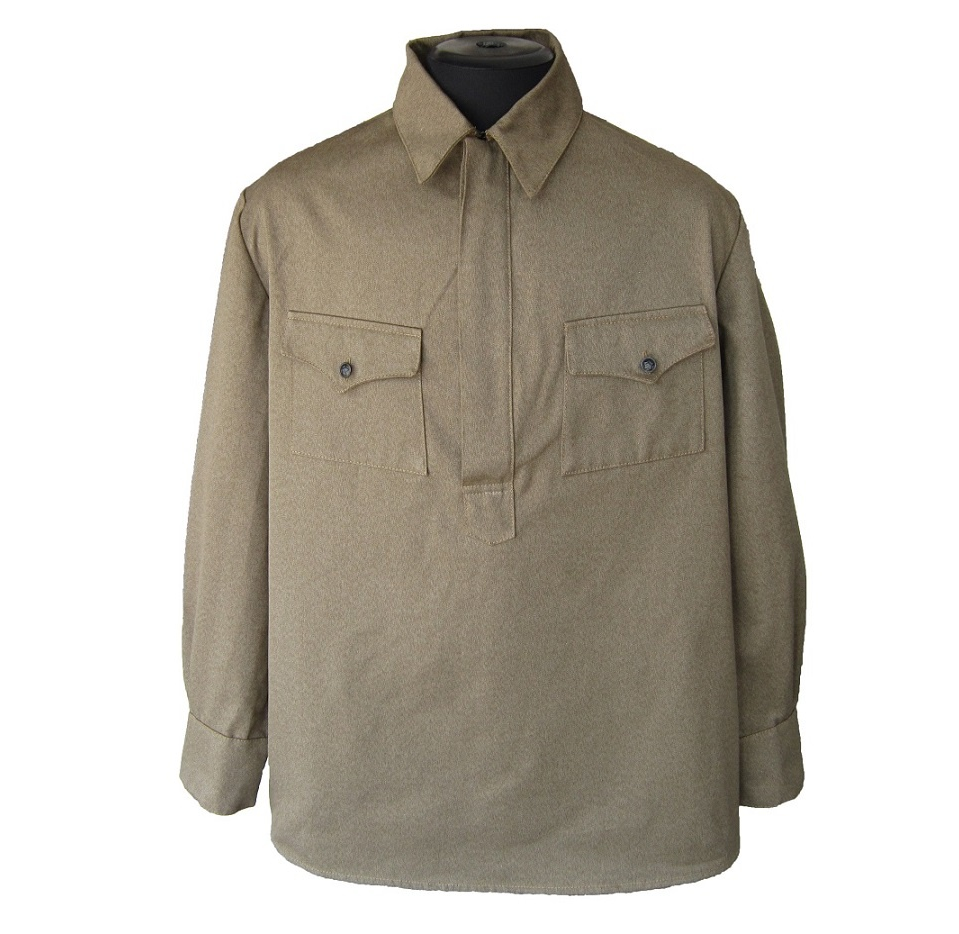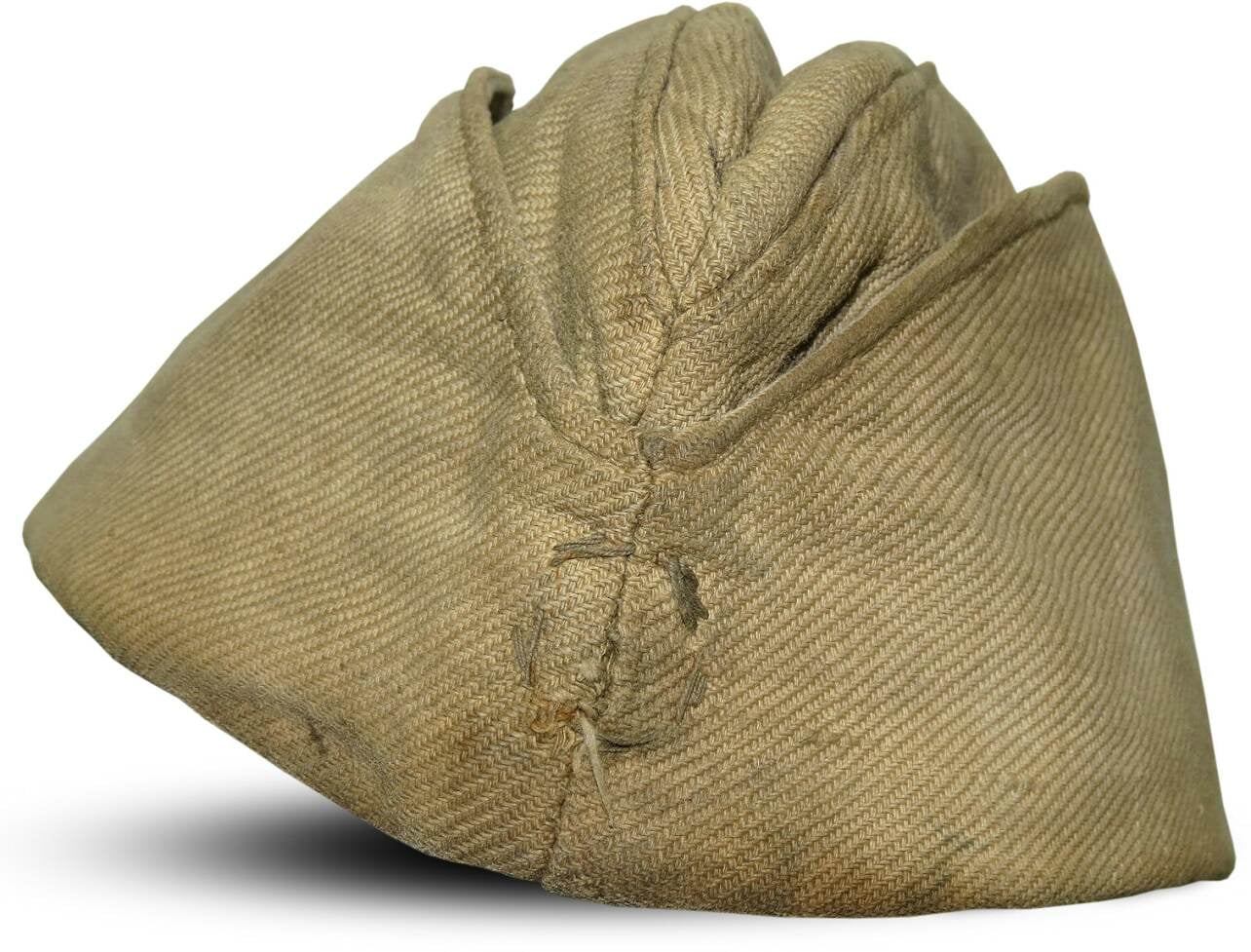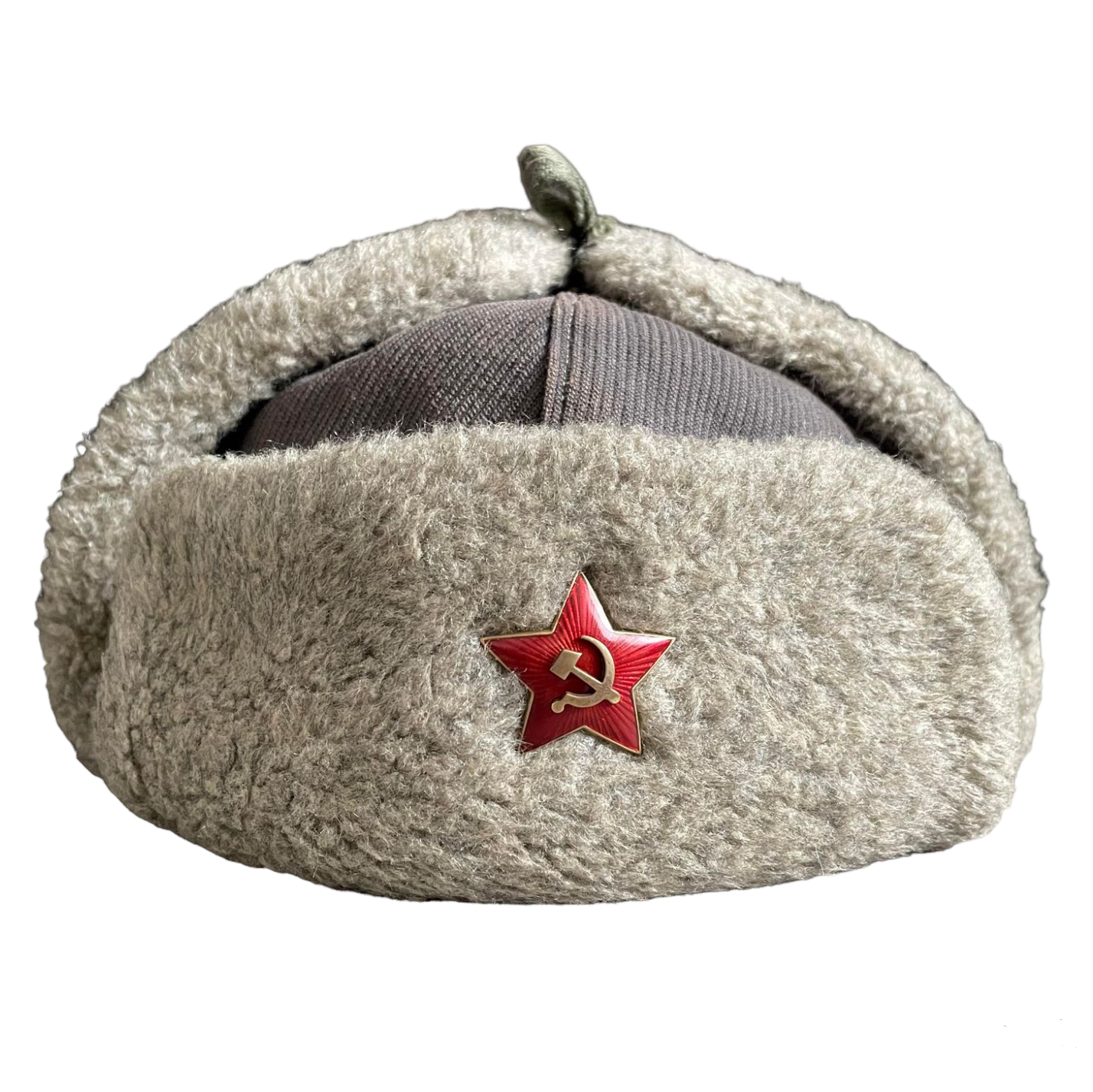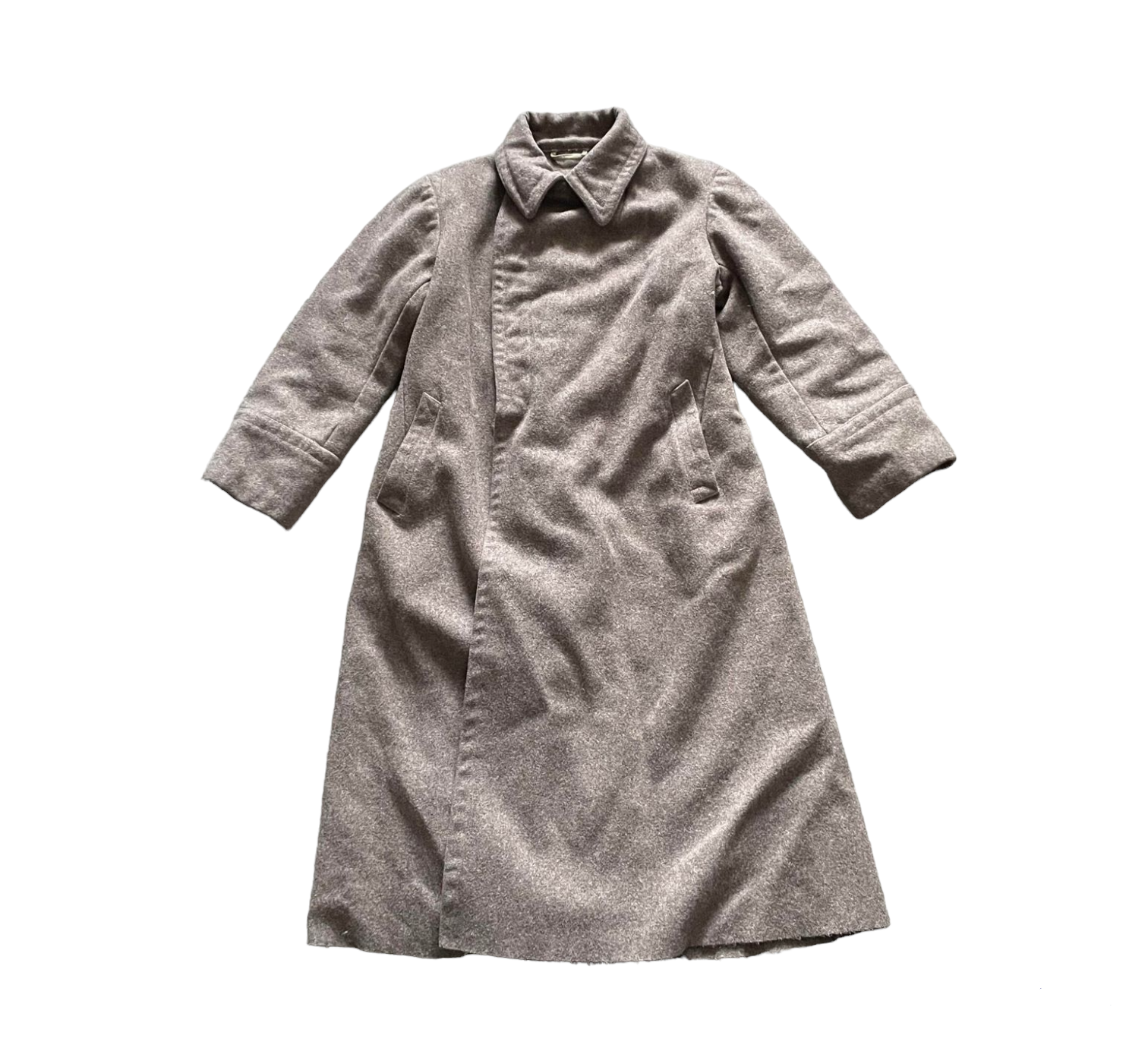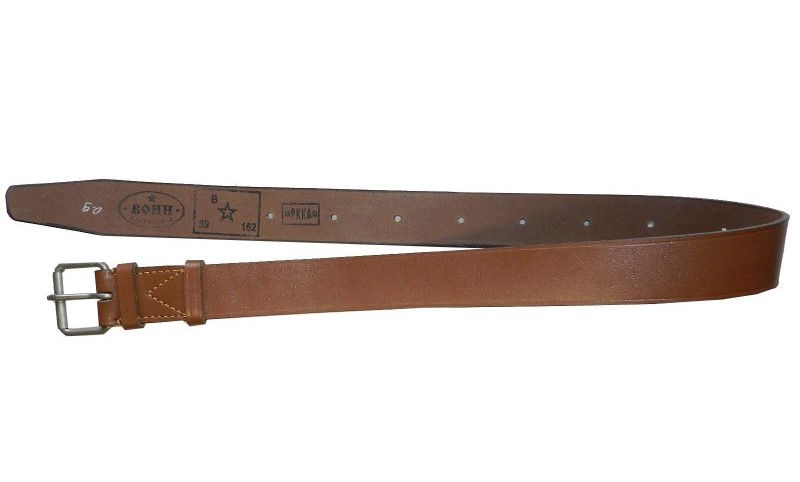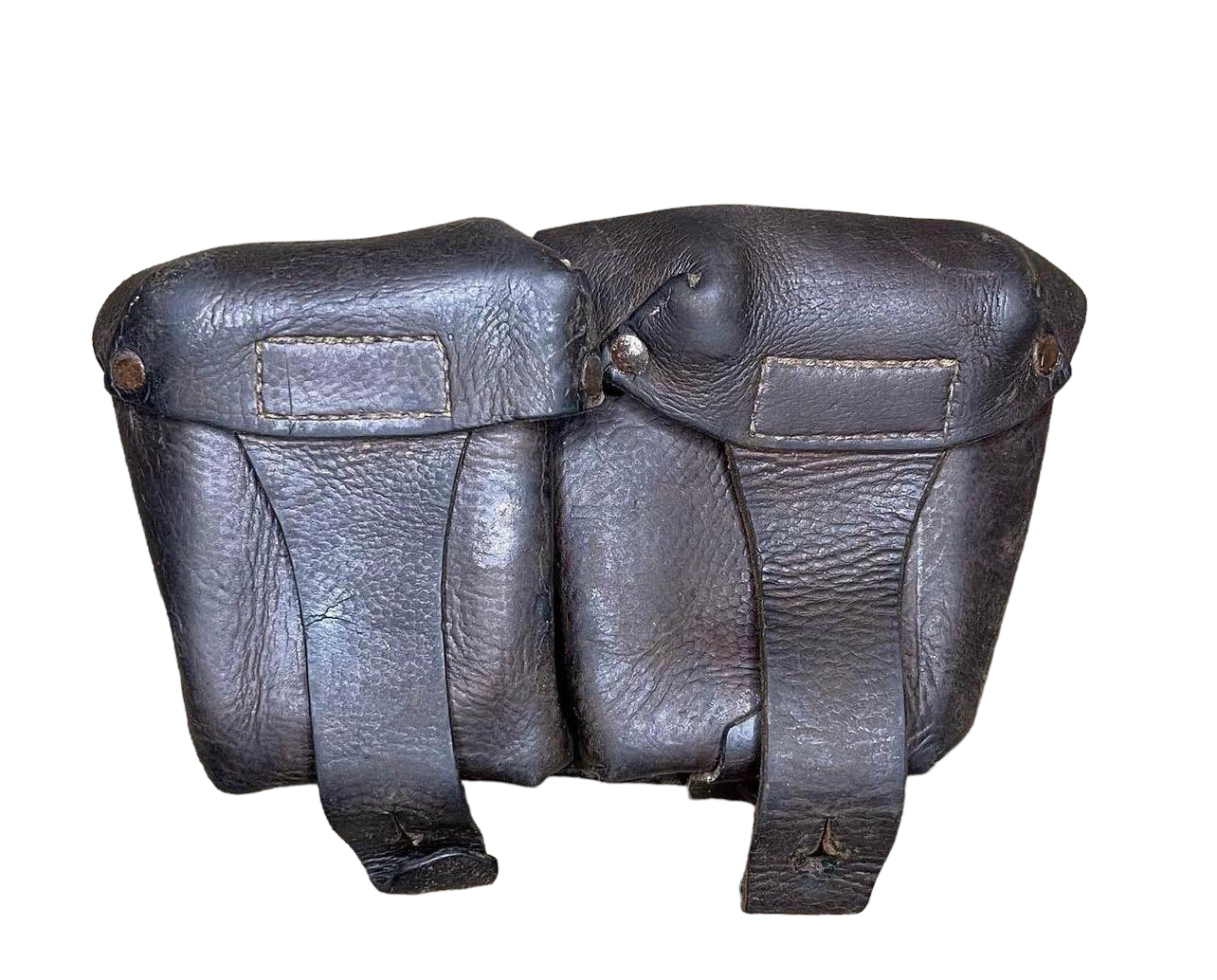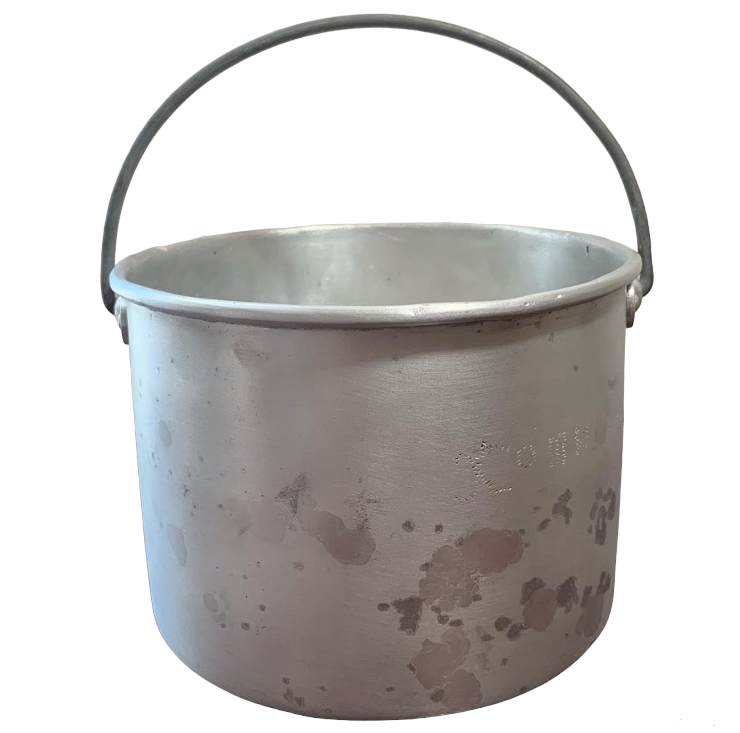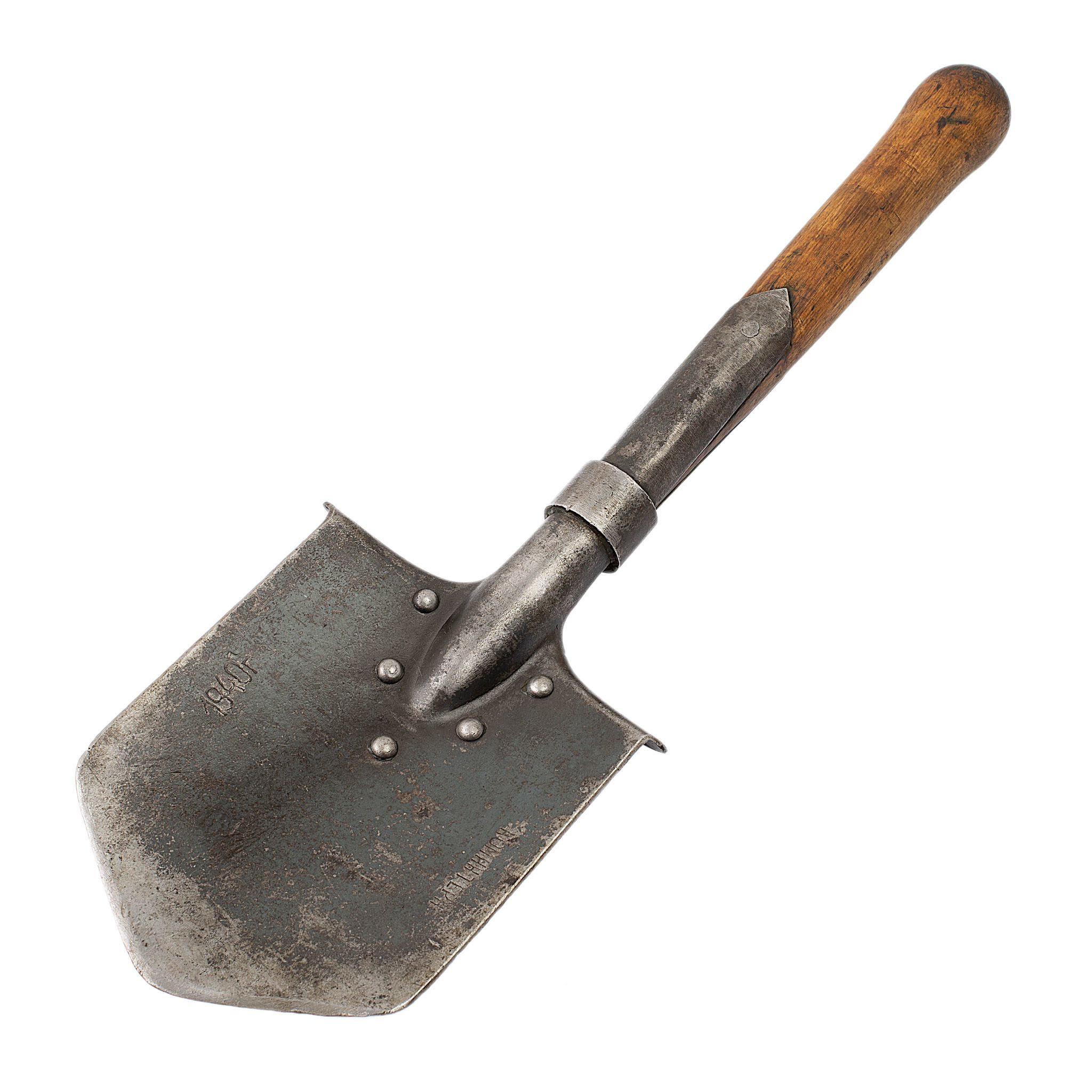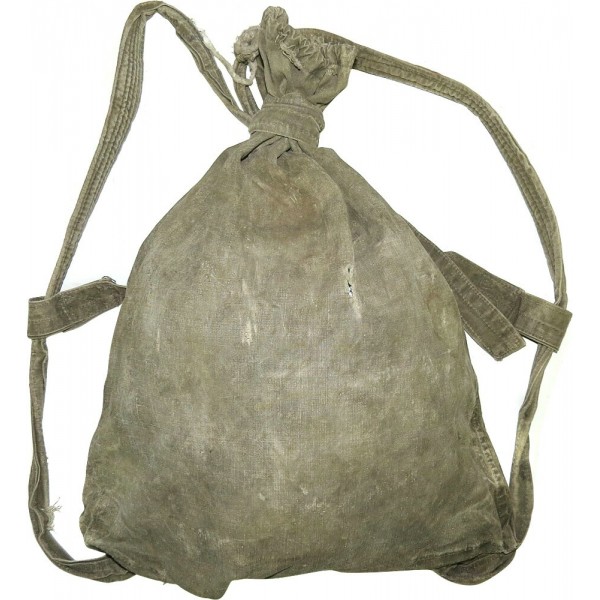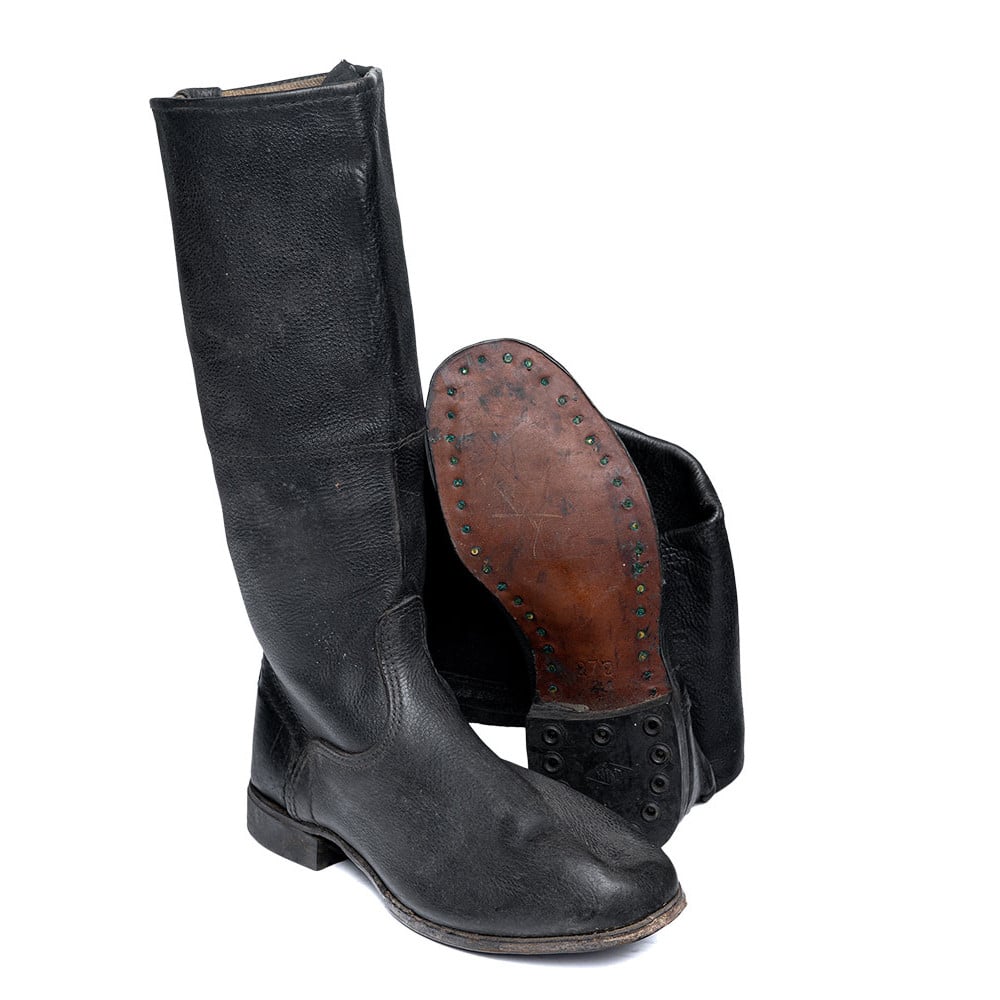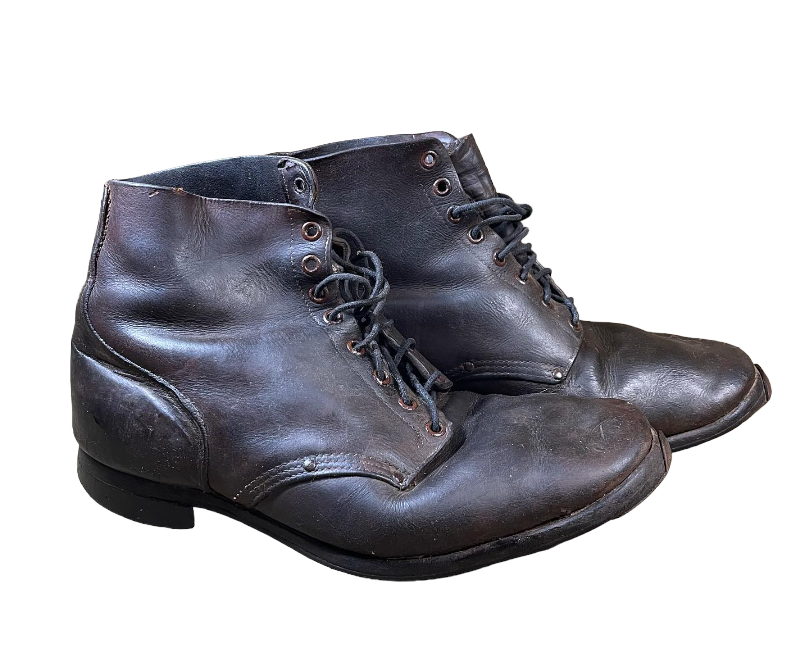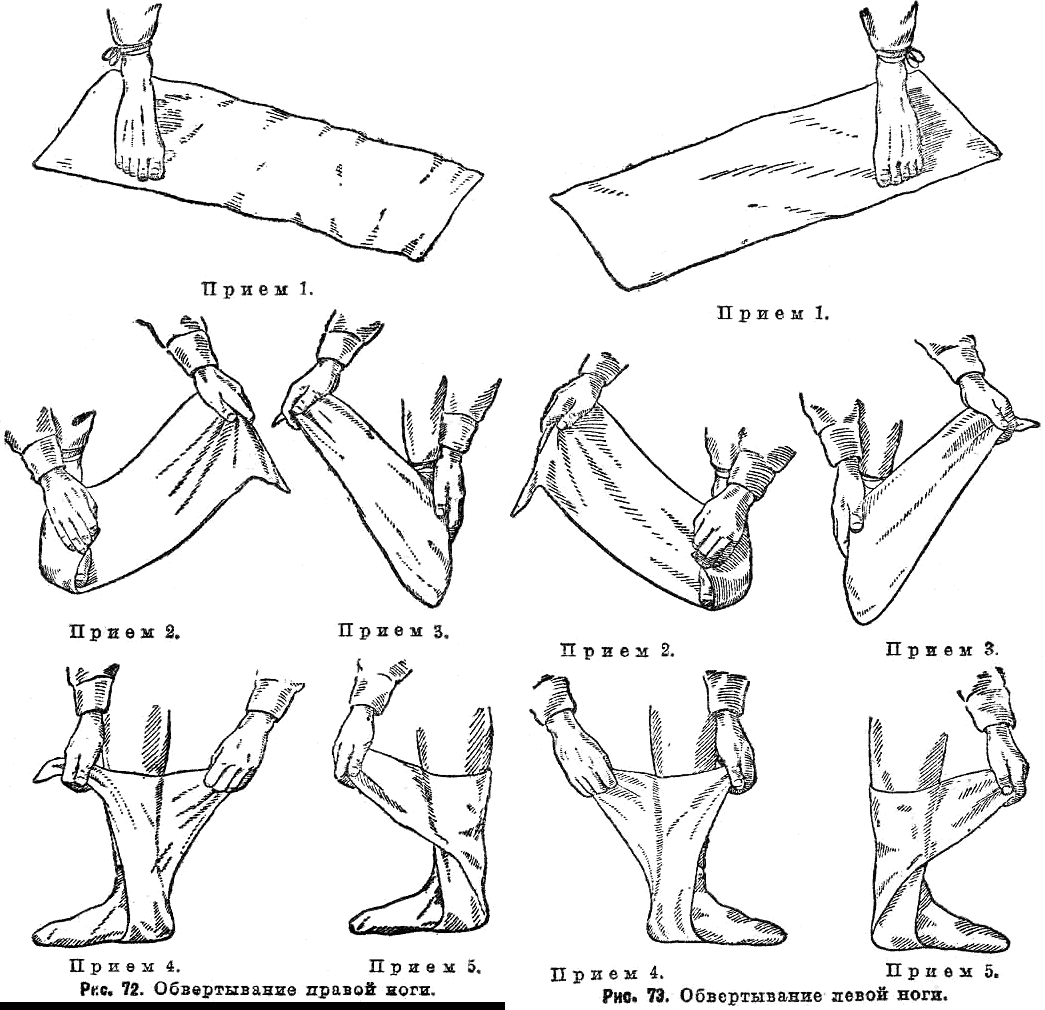Universal Items
By Max Schmidt
This will serve as an overall guide for items that can be used with any soviet infantry impression across the war from 1941-1945. There will be some item overlap that can be seen in the other general infantry impression guides. These items are a great starting point if you are beginning to build a soviet impression or want to know what items should be your first priority.
Clothing and Insignia
Model 1935 Gymnastyorka
A tricot pullover cotton tunic, with stand and fall collar and front buttons concealed by a fly front. Two pockets on the front. Also has elbow reinforcements. Can be cotton or wool, for winter use. This tunic works can be used throughout the war HOWEVER FROM 1943-1945 they MUST be transitional 1935 tunic with the shoulder boards sewn on. Otherwise they will need the 1941 or 1942 insignia based on the impression. Voin, Schuster, and Voenspec make excellent tunics.
Model 1935 Breeches
Double twill cotton breeches, with button fly and back belt for adjustment. Knees have diamond shaped reinforcements. Enlisted men’s breeches do not have buttons for suspenders. The can be used without modification from 1941-1945, there are 1944 trousers available that have a rear pocket, but we recommend you use the 35 model across all your enlisted infantry impressions. Voin, Schuster, and Voenspec make excellent breeches.
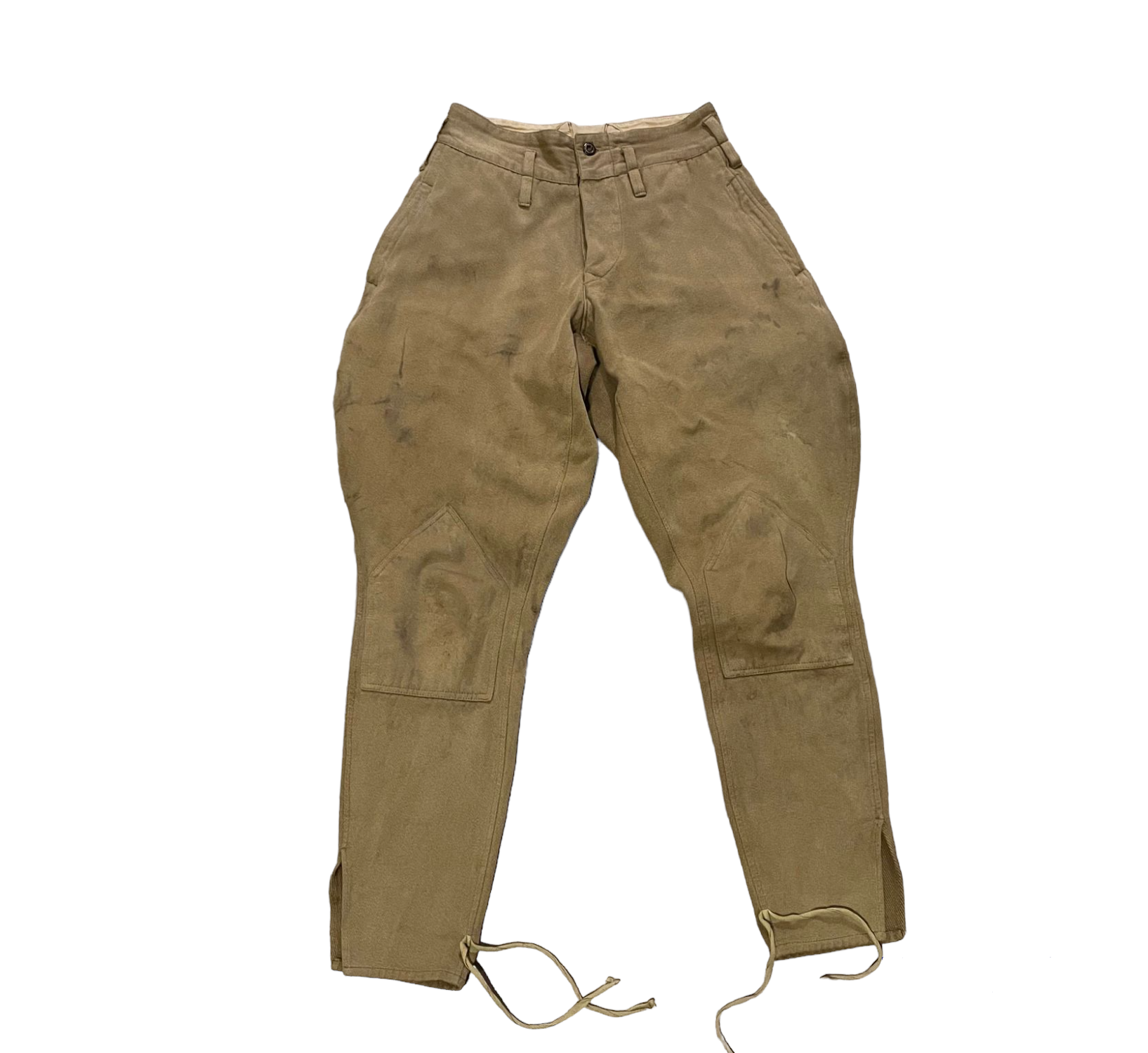
Model 1935 Pilotka
A sidecap made from double twill cotton, same as the breeches. This would have been the issued headgear in the summertime, and on paper, would have been turned in for a ushanka in October. The cap had a 24 or 34mm enameled red star on the front, although this was supplemented by stamped tin stars, painted green, of 24mm size starting in the summer of 1942. The Other Hat Guy and Leningrad Hat Maker both make excellent pilotkas.
Model 1940 Ushanka
The famous Soviet winter cap, issued from October to April usually. It is a flapped cap, with a baika (flannel) body, edged in artificial fur. The fur should be short and almost carpet-like. Officers had real fur on their caps. Like the pilotka, it could have an enameled red star or a tinned green star. Schuster makes an acceptable copy, but the premier vendor is The Other Hat Guy on Facebook.
Underclothes
White cotton undershirts with either a rounded collar or a buttoned “V” collar as well as long white underpants were standard issue. Each soldier carried two sets. Winter weight underclothes were a heavier weight of cotton. This style is good for any impression from the late 30’s onward. Voin makes all variations of the shirt and pants, and Cold War sets are still available. They are largely identical.
Greatcoat
A woolen, double breasted coat, closed by hooks and eyes. The 1935 model can be used throughout the war, you may need to change the insignia based on the year of your impression, otherwise insignia-less works fine too for each year of the war. Try to avoid model 1969 “Brezhnev” coats. Voin and Schusters offer solid reproductions.
Equipment
Equipment Belt
A 1.5-2 inch wide leather belt, with a blackened or rarely chromed prong and frame to close it. Webbing belts with leather reinforcements, 2 inches wide, were also used by 1942. Otherwise a standard enlisted leather belt will work for soviet impressions across 1941-1945. Schuster, Voin, and RGM make reproductions.
Model 1937 Rifle Pouches
One leather pouch for Mosin or SVT ammo can be used for any period of the war. The only slight variation to this is having 2 in 1941 and not seeing mosin pouches worn as much in 1945. The Model 1937 pouch had many variations of its closure strap, but the basic design of a two celled box with a ring on the back remained constant. RGM, Voin, and Schusters all make a variety of rifle pouches.
Canteen and Carrier
The Model 1932 canteen, with a screwtop, can be used for any impression throughout the war. East German reparations canteens are the closest non original item. Postwar canteens are acceptable if one has removed the paint, but try to avoid them if possible. It should be contained in a Model 1941 carrier, a cotton bag with a closure that goes over the top of the bottle. Leningrad Restoration Workshop restores and sells original Soviet canteens.
Mess Kit
The existing stocks of the Model 1936 mess kit and older Model 1927 pots can be used for any impression 1941-1954. Soldiers also carried a mug and spoon, and since they usually brought their own when they were mobilized, there is no standard model. Avoid modern graniteware cups, with their telltale exposed metal rim at the top. Leningrad Restoration Workshop restores and sells original Soviet mess kits.
Shovel and Carrier
A Linneman style shovel (Obr.10), pointed or squared off, carried in a canvas carrier on the belt. An essential piece of kit, you can use any Linneman style of shovel, except for postwar Hungarian 50M shovels with their distinct short, humped, handle. RGM occasionally has original Soviet shovels for sale.
Helmet
SSH-40
This is the only helmet that can be used for any impression through the war. However it should be your LAST choice for a 1941 impression. A further modification of the SSh-39, with the intention of improving the helmet for winter use. A new three pad liner allows the wearing of winter headgear (balaclavas, ushanki) under the helmet with some comfort. These helmets were just entering production in early 1941, and started to make it to the front in large numbers by mid 1942. Thus, this should be your first choice for a 1942 impression. Originals and examples made postwar are common, and can be had cheaply. They were made in three sizes, with Size 1 being for 54-57 heads, Size 2 for 58-60, and Size 3 for 61+.
Footwear
Jackboots
All leather boot, with a shaft rising up to above the calf. The soles should be leather as well, with no hobnails, but toe and heel irons have been noticed. Leather soles can be used from 1941-1945. Starting in 1942 dot sole boots would see more use. The shape of the shaft should be more stovepipe-like, rather than the oblong German style shafts. This is a hard piece of gear to get, as postwar examples that are correct have largely dried up, especially in bigger sizes.
Low Boots and Puttees
In a economizing measure, low boots and puttees were reintroduced to the Red Army by 1938. These boots were very similar to German models, with 8 eyelet rows and a curved vamp. Soviet boots however were made from smooth side out leather, and had leather soles lacking hobnails, although toe and heel irons have been noticed. These were always worn with puttees, for 1941, black puttees are preferred, but we begin to see khaki and green puttees as well. From 1942 onwards green, grey, or khaki puttess are preferred. Voin and Schuster make the puttees in all colors, though.

